

In 1947, the Signal Oil Company hired cartoonist Albert Wentworth "Al" Demaree (1884-1962) to create a set of Pacific Coast League baseball cards. Demaree was ideally suited to draw images of baseball players, being a former pro, himself.¹ The artwork is wonderful, drafted in the style of "Ripley's Believe It or Not," with descriptors like, "he is famous for his violent temper," "called 'Gabby' because he never says anything," "was out of the game two years with bad eyes," and the horrifying "liable to decapitate an infielder with a line drive at any moment."
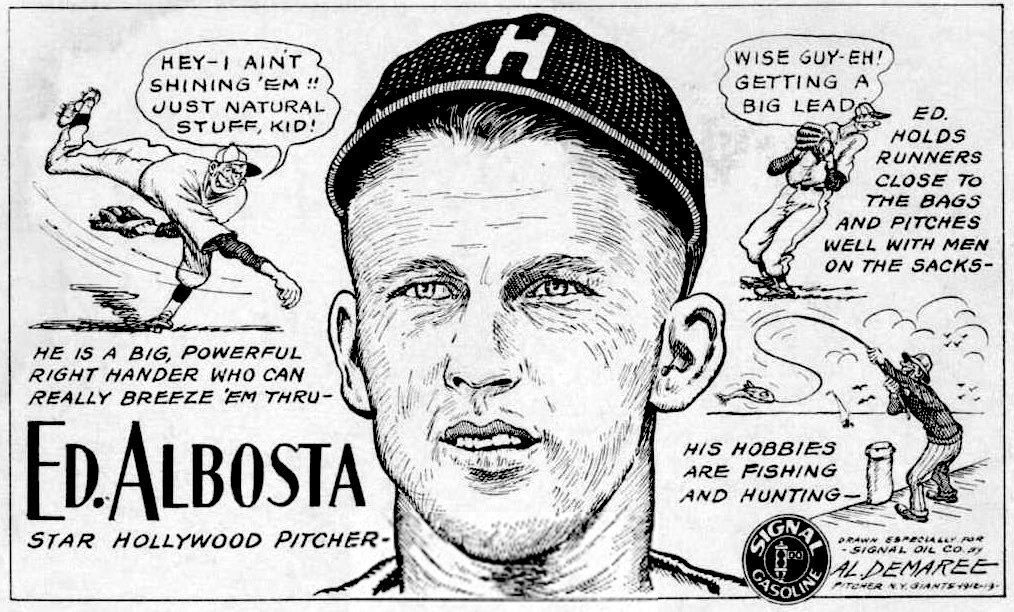



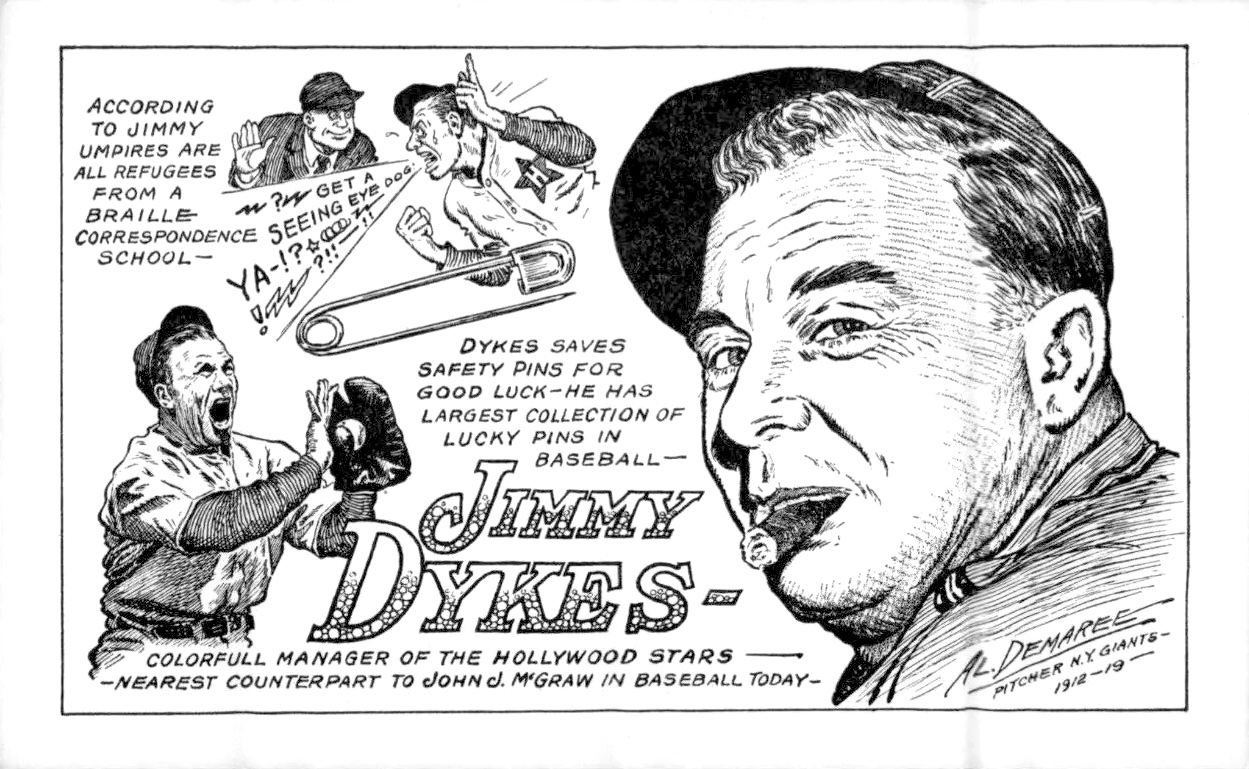

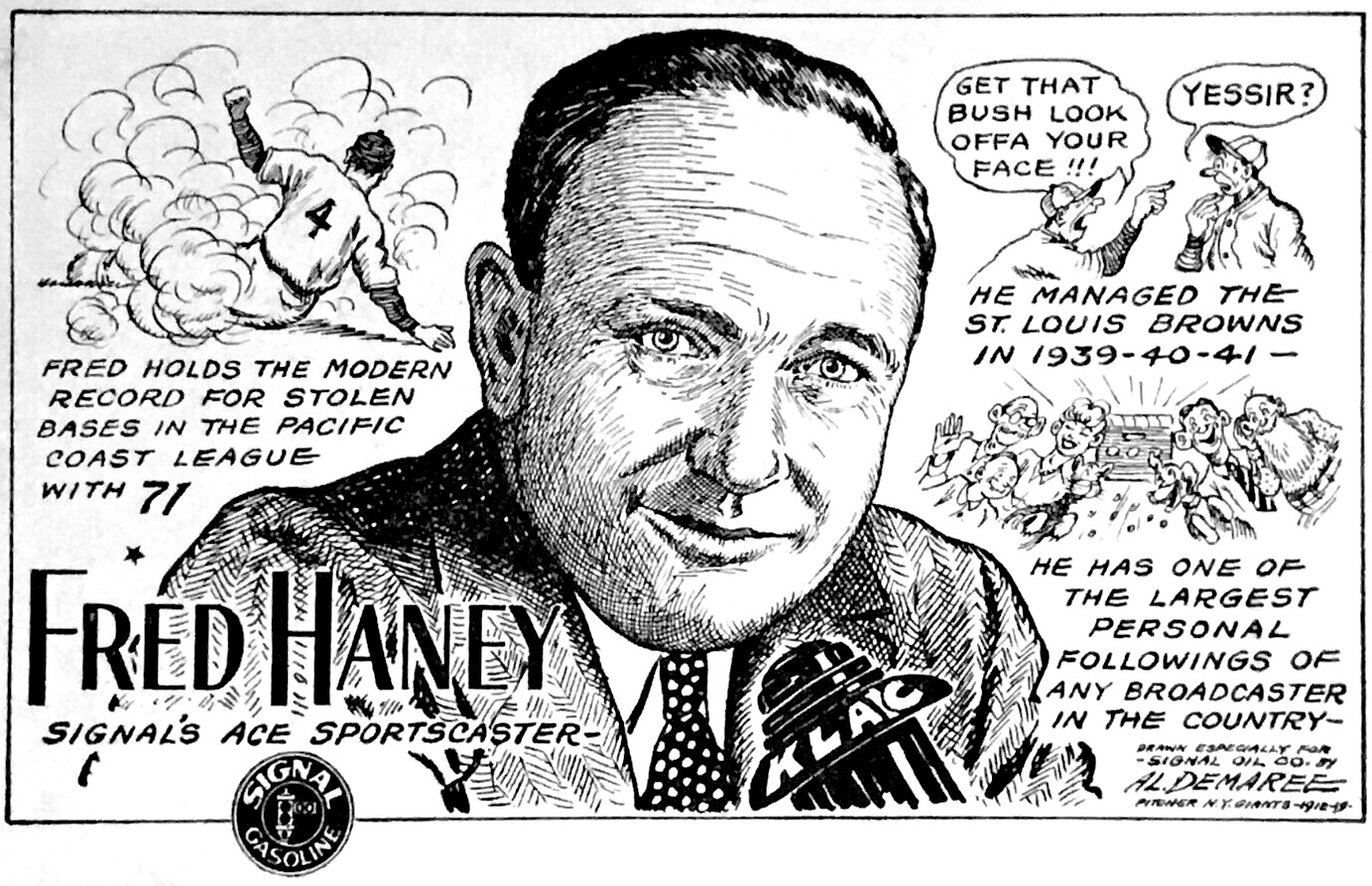
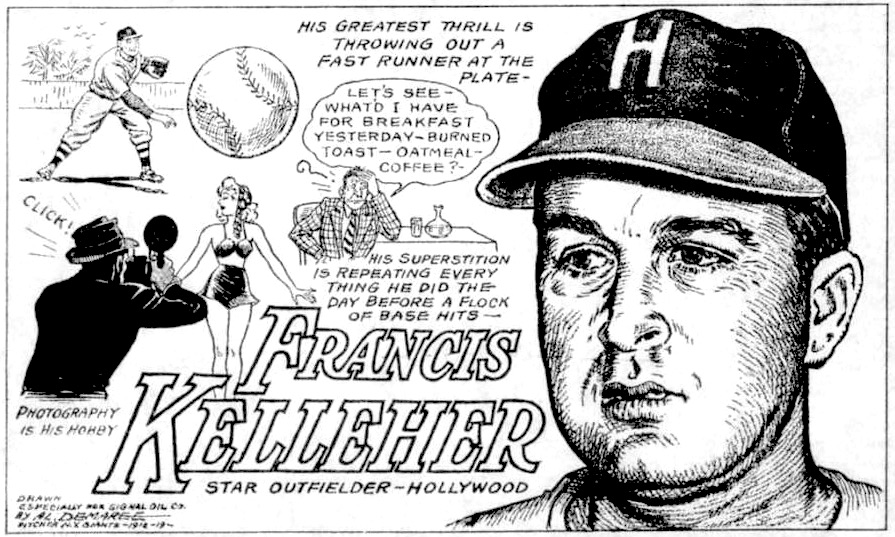
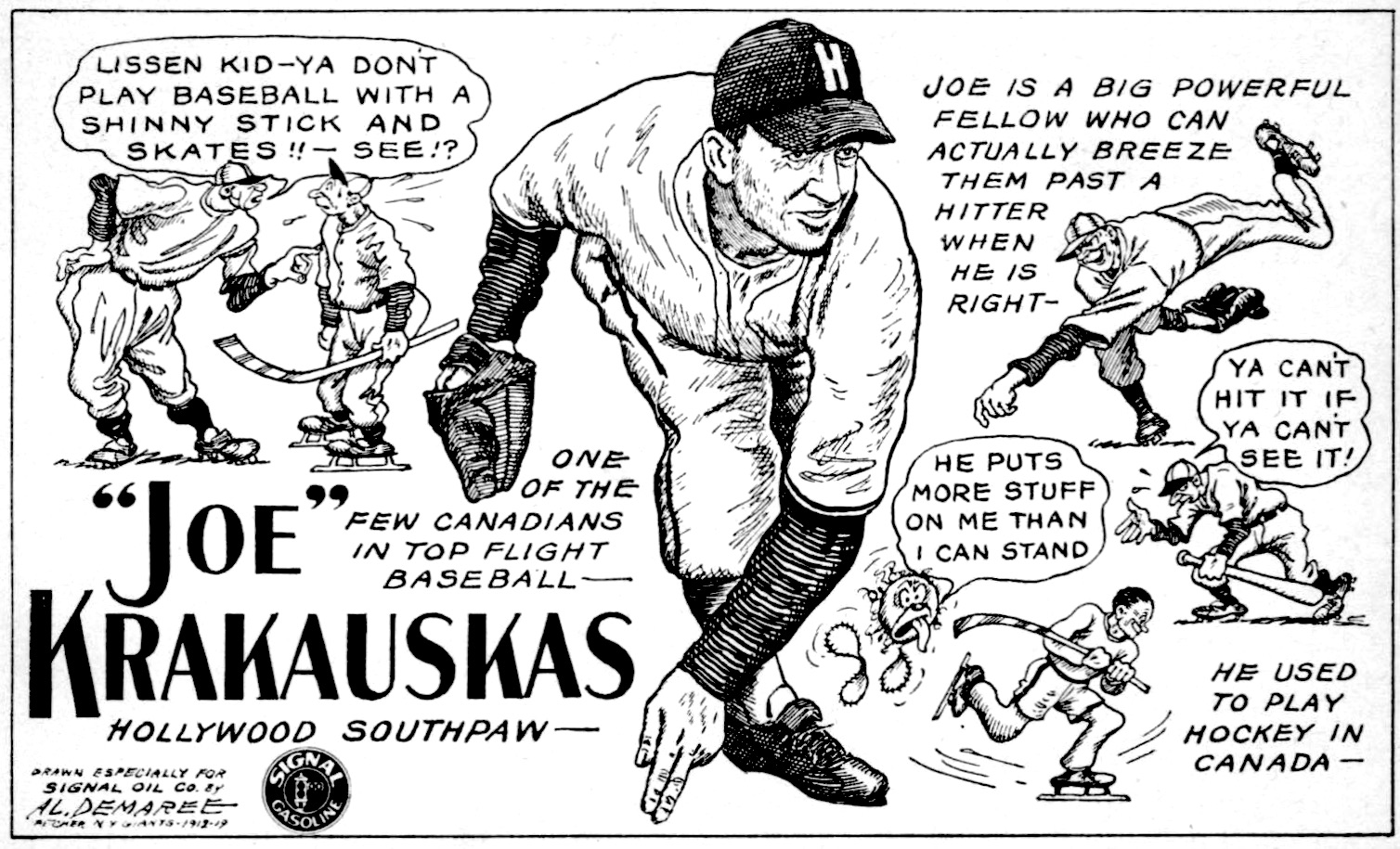
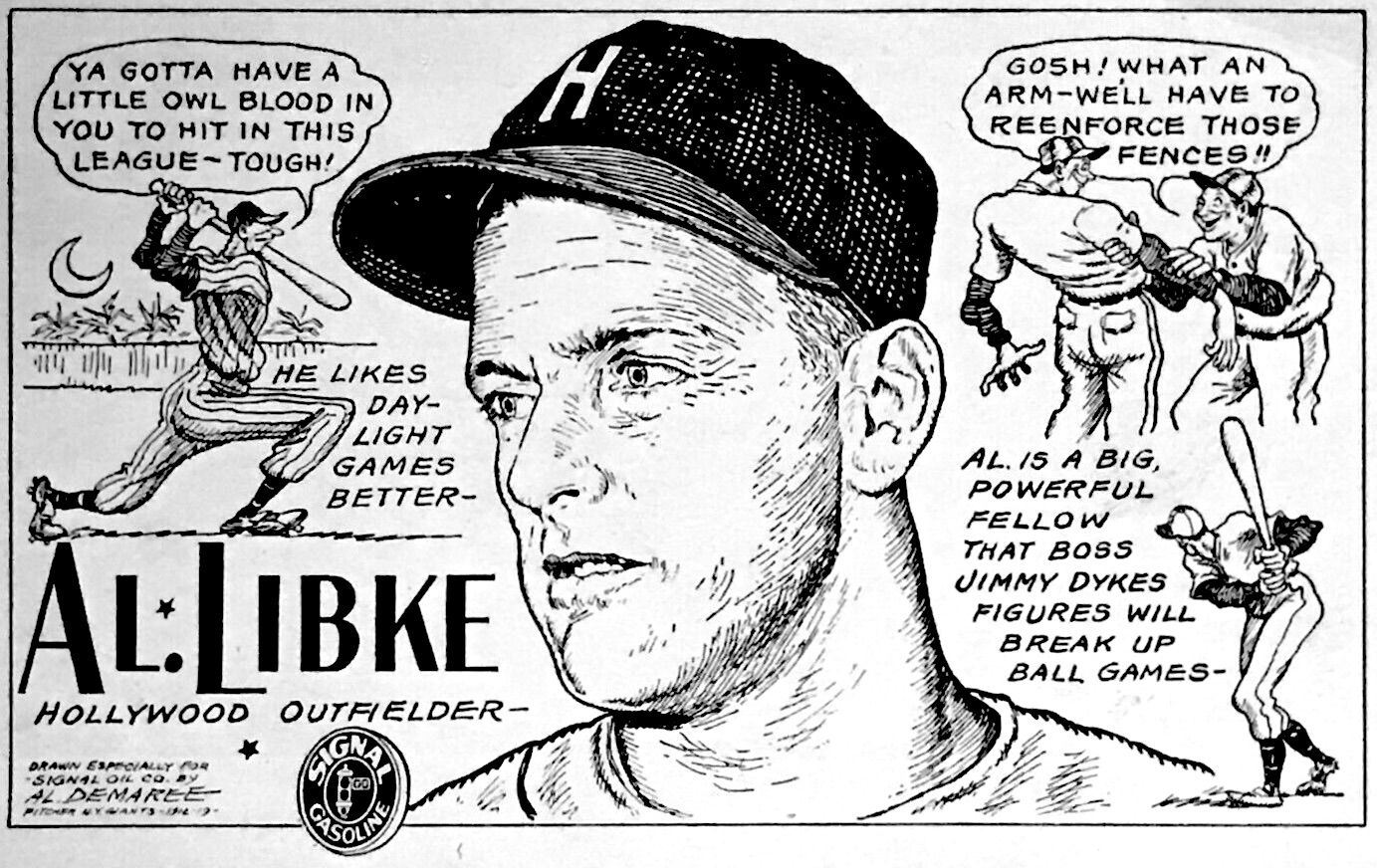
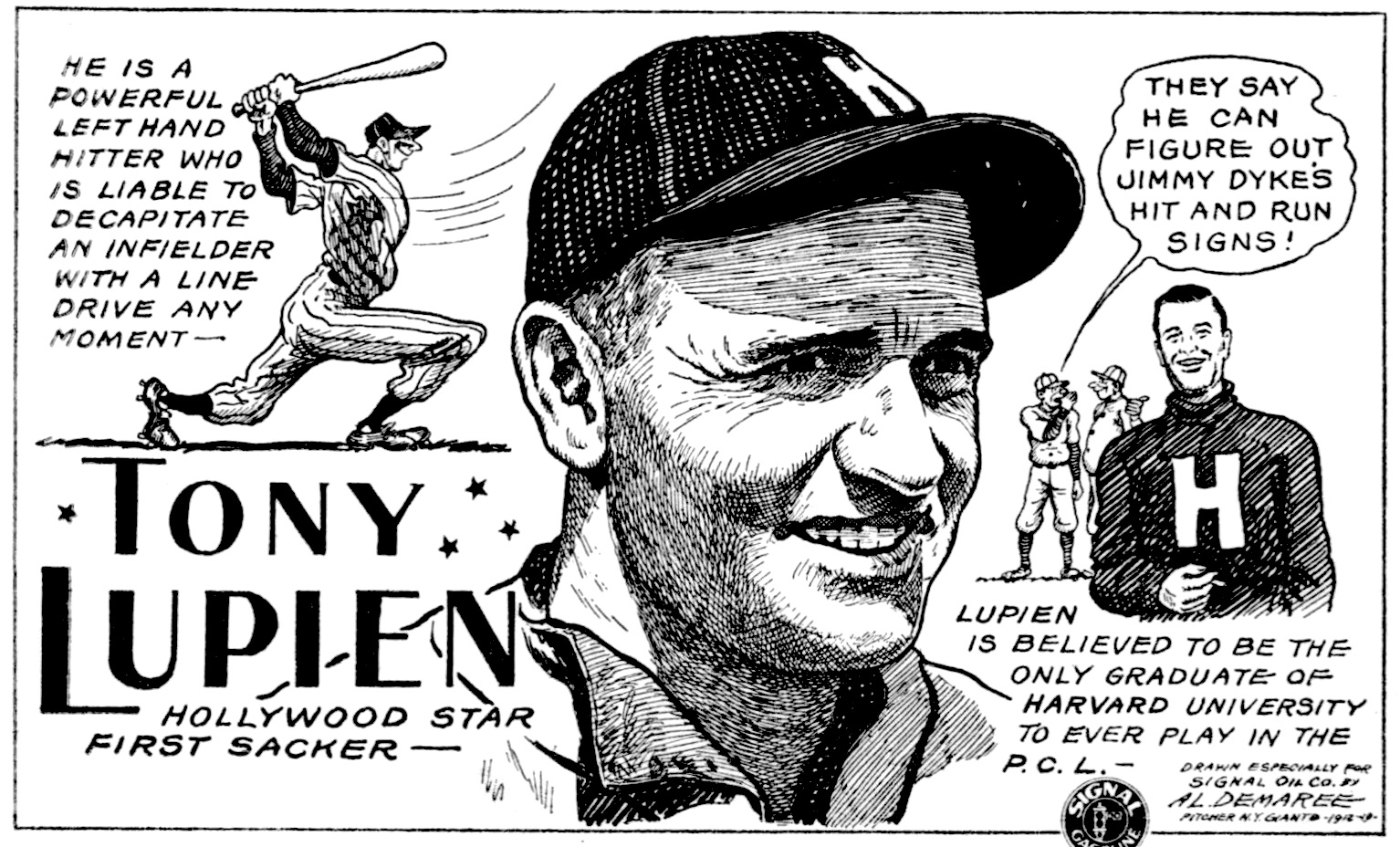
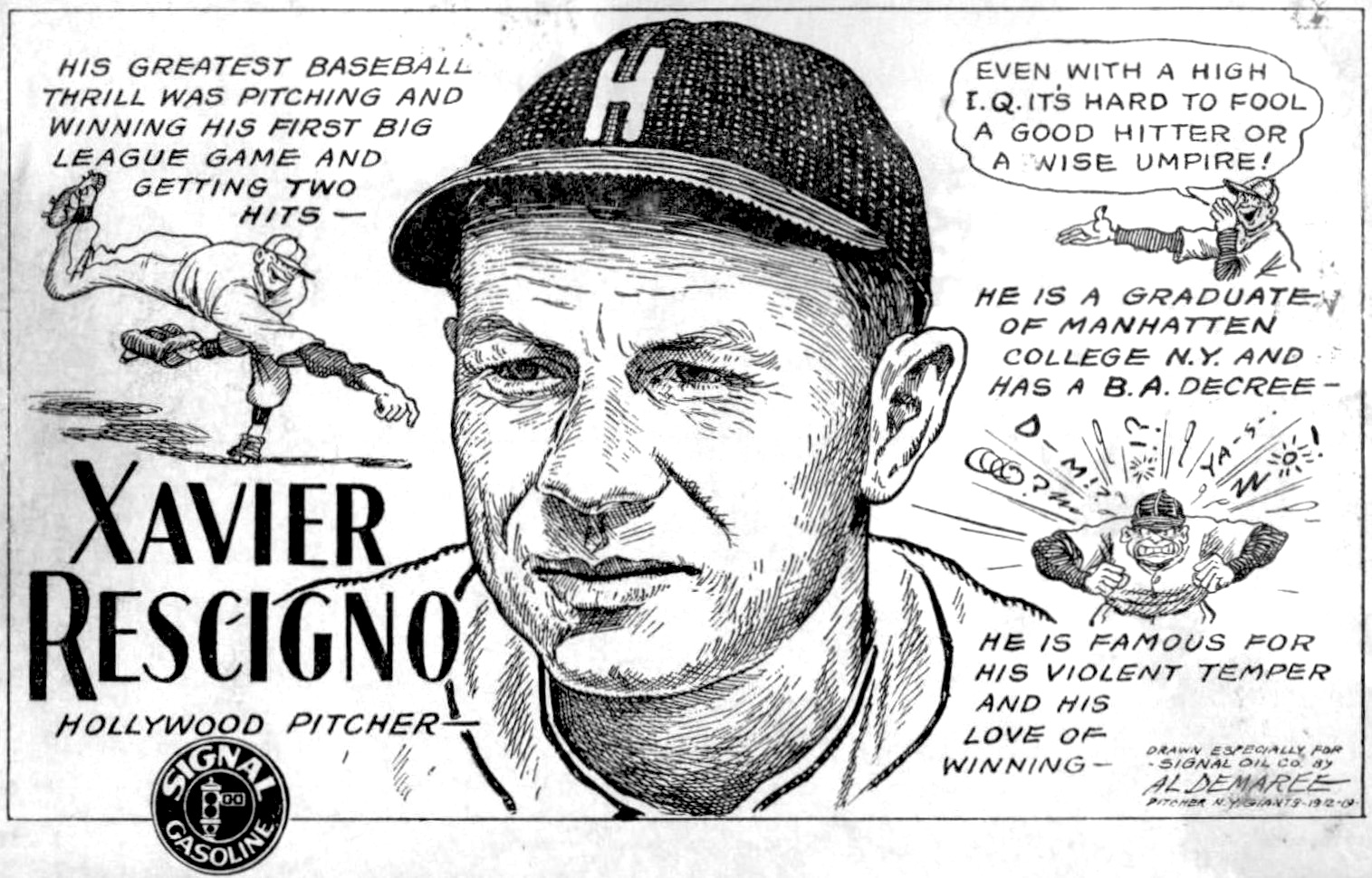

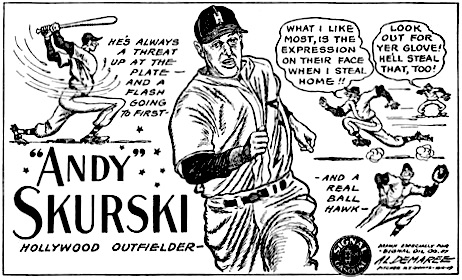

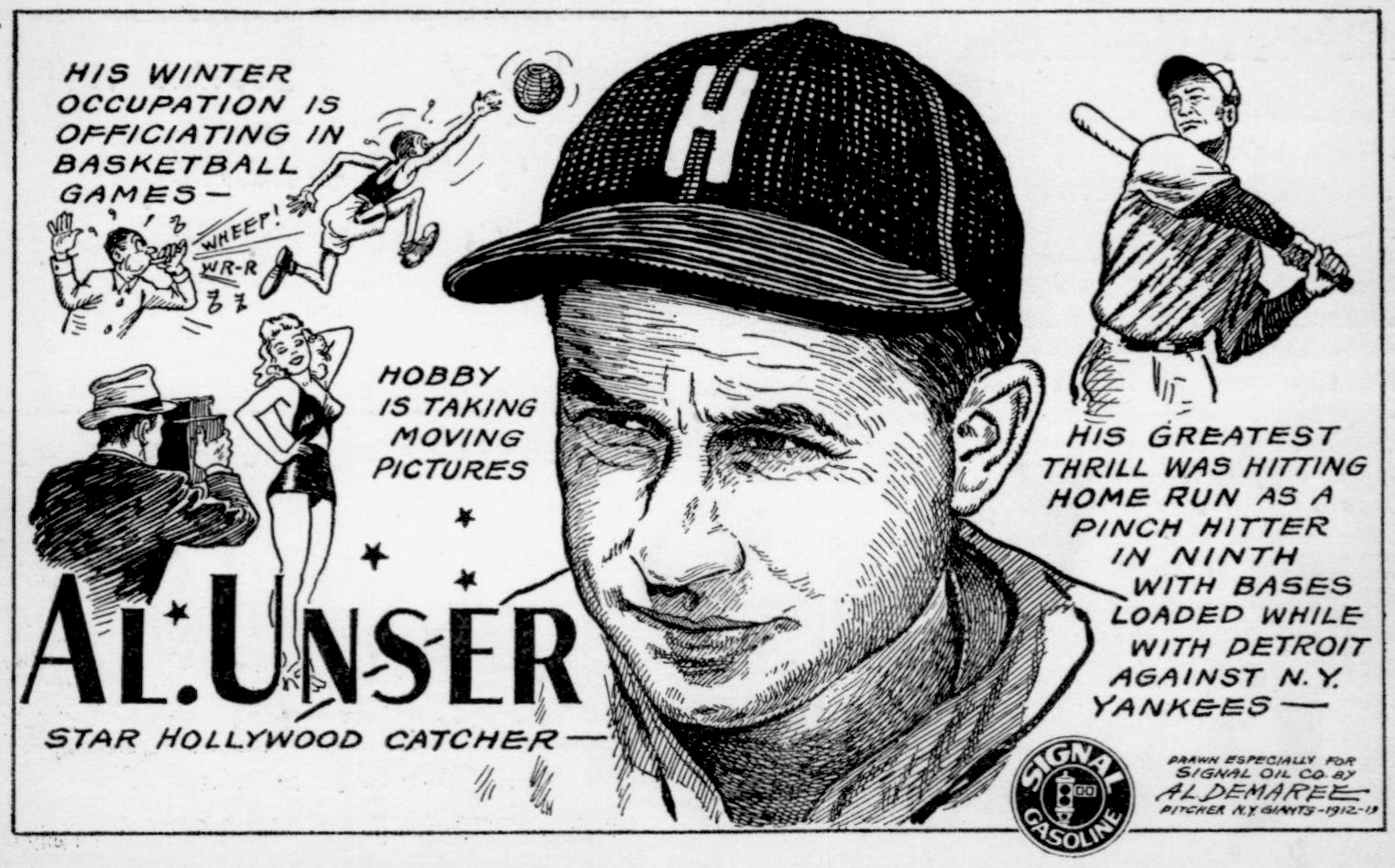

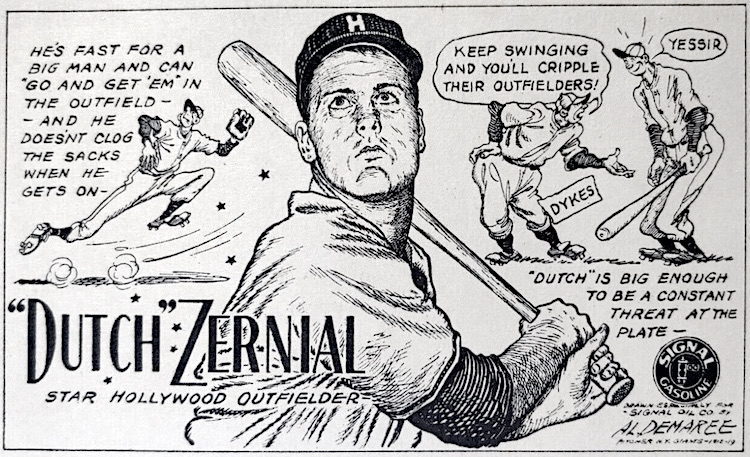 Written by Jeff Hause. Thanks to Vice President Mark Panatier of the A.F. Gilmore Company, for his assistance in the researching of this article.
Written by Jeff Hause. Thanks to Vice President Mark Panatier of the A.F. Gilmore Company, for his assistance in the researching of this article.
NOTES ON THIS PAGE:
¹—"Al Demaree", by Phil Williams. Society for American Baseball Research (SABR). After several years in the high minor leagues, Demaree debuted as a New York Giant on September 26, 1912, to shut out Boston in the second game of a doubleheader, officially clinching the NL flag for his team. Coach John McGraw claimed it was the "finest work he had seen done by a newcomer in 20 years of base ball." No less than Damon Runyan called him "Steamer Al," and the nickname stuck with Giants fans. Runyan also noted Demaree's "most awkward" delivery in 1913, in which he would thrust his right hand into his hip pocket, where he stashed powdered rosin to cover "the tips of his first two fingers of his pitching hand." Giants fans also followed Demaree as a cartoonist in the sporting pages of the local New York American newspaper, starting in 1913. After a couple of seasons with the Giants, he was traded to the Phillies in 1915. He moved around the Majors until February of 1920, when he was sold to Seattle of the Pacific Coast League. Eventually he became a manager for the league's Portland Beavers. But Commissioner Kenesaw Mountain Landis then placed Demaree on baseball's ineligible list when he was caught pitching semipro games with banned players. Demaree was reinstated a year later and finished his pitching career with the American Association's Columbus Senators in 1924. Along Demaree's stops, he found work cartooning with local newspapers. In 1922, his artwork was added as a semi-regular feature in The Sporting News. In 1934 and 1935, respectively, he illustrated baseball card sets for the Dietz Gum Company and Schutter-Johnson Candy Company. Sadly, Demaree's fortunes declined in the late 1930s. His syndicated work dried up and his marriage ended in divorce. On January 20, 1939, he was arrested for running out on a $47.20 hotel bill. Demaree told the court he had been on a drinking spree and that $50,000 saved during his baseball career was now "all spent." The courts gave him several weeks to raise the money to pay the bill, but he was unable to do so. Consequently, he was sentenced to serve 15 days in the county jail. In 1947 he moved to California and illustrated the PCL card set shown above, for Signal Gasoline. Then he drifted into retirement, calling a Los Angeles hotel home. Interviewed in 1961, "Steamer Al" pronounced his life's ambitions met: "I always wanted to be a major league baseball player, then a cartoonist and then just sit a hotel lobby with a big rich Havana in my mouth." On April 30, 1962, Demaree died from cerebral arteriosclerosis and is buried in Harbor Lawn Mount Olive Cemetery in Costa Mesa, California.
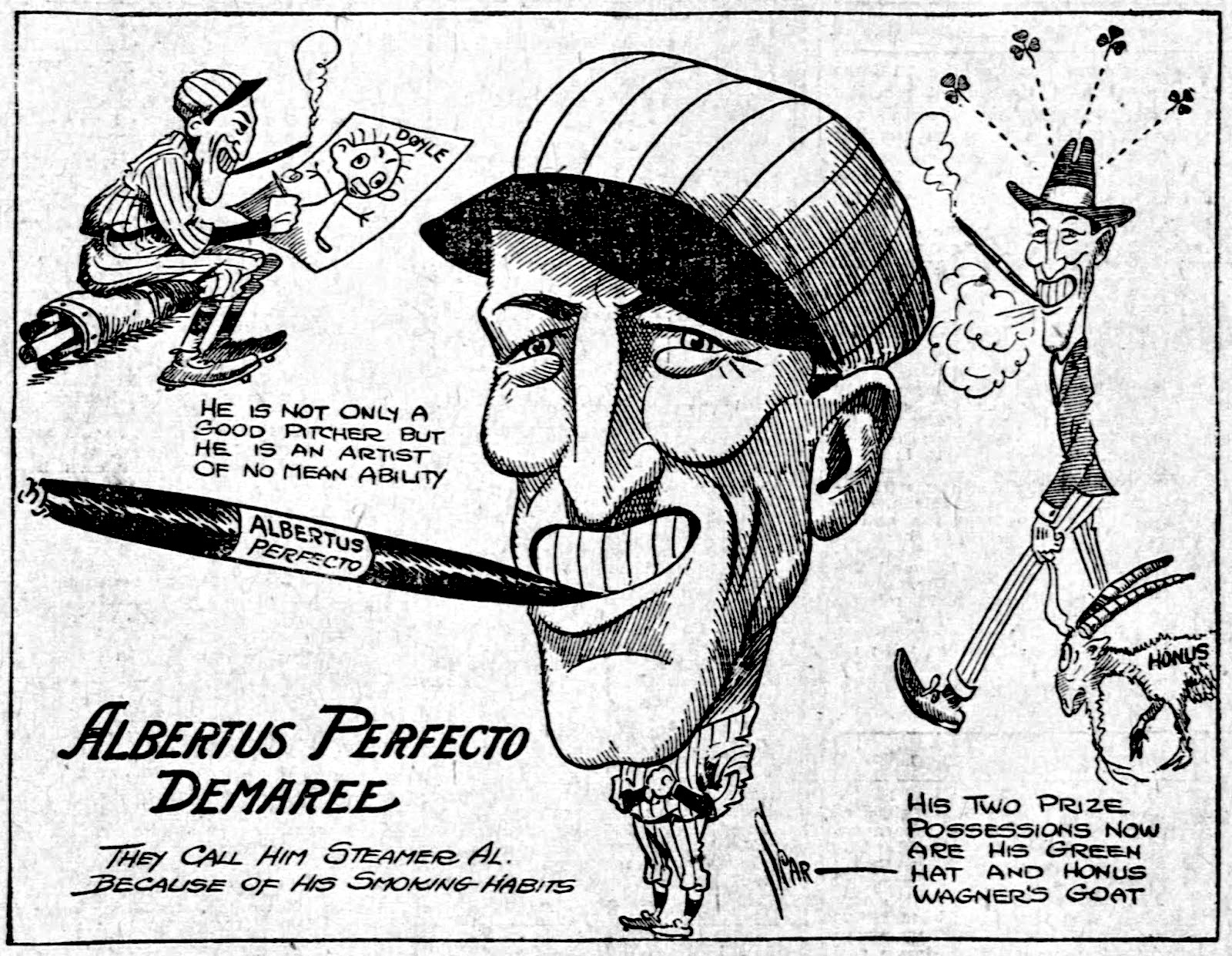
A similar cartoon of DeMaree in the El Paso Herald in Texas, from 3/9/1914.

Overview: The Stars come out to shine in Hollywood in the INTRODUCTION:

Early History: The Stars strike out once then re-emerge like a great Hollywood remake in PART ONE.

The Glory Years: The Stars win the hearts of Hollywood and dominate the PCL in PART TWO.
|